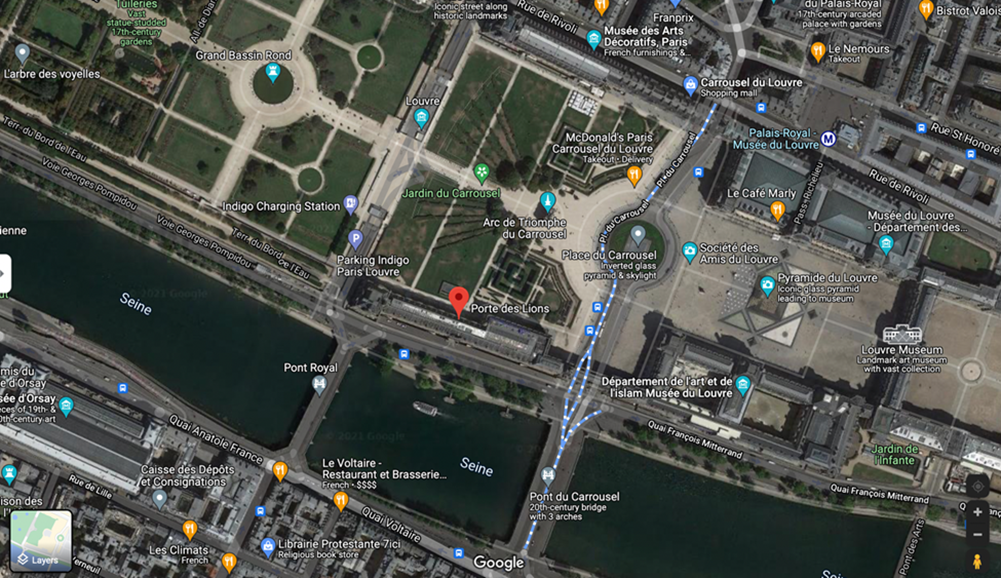Each month, a postgraduate student or an early career researcher shares their experiences of using a particular archive. The overall aim of this section is to create a database of the different archives available to those working on French and Francophone studies that will be of help particularly to students just starting out in research.
Sarah Lund (Harvard University) works on female printmakers during the long revolutionary period of eighteenth- and nineteenth-century France. Here, she discusses her research at the Centre de documentation of the Louvre Museum in Paris.

The Louvre Museum is home to one of the world’s largest collections of art and visual culture – which also means that it is home to a large trove of documentation about that collection! The museum is divided into a variety of departments: for example, the Paintings department, the Egyptian Antiquities department, or the Graphic Arts department, with a full list found here. While the artworks themselves may be their more visible holdings (and which, in the Graphic Arts department, are also available for researchers, each department also has its own “Centre de documentation,” or documentation center, which holds files on the artworks and artists in their collection. I first began work at the Centre as part of my dissertation research on female printmakers in late eighteenth- and nineteenth-century France. My personal experience is in the Centre de documentation of the Graphic Arts department, but I hope this guide will be useful for getting started in other departments as well.
First, what exactly do the documentation centers hold? The Graphic Arts Centre de documentation holds files organized by artist. Within those files are a variety of information: excerpts from artist biographies, old photographs of artworks, scans of scholarly articles on works in the museum’s collection, and clippings from sale records. This last category was the most useful for me, as it mainly includes artworks not held in the Louvre’s collection. It was there that I found the record and sometimes even images of works by my artists that I had not encountered elsewhere and was subsequently able to track them down. The files are organized by artist last name and grouped together in boxes alphabetically. At the beginning of each box is a folder of clippings that have not yet been filed – make sure to check this too!
Access to the Centre de documentation is strictly by reservation only. From the Louvre departments list webpage linked earlier, click on your desired department to take you to the department homepage. On the left you will see a menu bar, with one option as “Le centre de documentation.” Clicking on that tab will present a second link that will take you to the documentation center page – the Graphic Arts department documentation center page can be found here. This page lists the center’s hours, location, and contact information.

The first step is to email the center stating your research needs, preferably with specific artists names. The Graphic Arts documentation center email is: DocumentationDAG@louvre.fr. To facilitate this, consult the museum’s collections online beforehand to build your list of artists. The general collections site is here, but for the Graphic Arts department, I recommend using their specific site here. In their response, the Centre should verify if they do hold files on the artists that you requested and then suggest dates to make an appointment. Note that it is possible that there is no file even for an artist whose works are in the collection.

On the day of your appointment, arrive directly at the Centre’s location – this is not through the museum’s pyramidal main entrance! For example, the Graphic Arts documentation Centre is accessed through the “Porte des Lions” – an archway cutting through the museum’s long façade closest to the Seine. The door is located in the passage, on the left if you are facing the Tuileries gardens. Introduce yourself at the security desk and present your email confirming your appointment (I pulled up my email on my phone). Security will ask for identification: I presented my passport; my student ID or American driver’s license was not sufficient. After checking you in, security will give you a paper badge and tell you to take the elevator to your designated floor (3rd for Graphic Arts).

Upon arriving in the Centre’s room, I was greeted by the curator and directed to set up at a central table – the Centre itself and its files occupy a series of rooms and hallway within the curatorial offices. I was left to pull boxes myself as I needed. As a note, as of Fall 2021 the boxes are going through a 3-day quarantine after consultation, so it may be prudent to verify that all your desired boxes are available beforehand. I was asked to leave boxes on the table after I used them. You are allowed to take pictures and to consult additional files that you did not request in advance. All in all, this is a great resource for potentially hard to track information for those working on artists and visual culture!
Sarah Lund is a PhD Candidate studying French female printmakers of the eighteenth and nineteenth centuries at Harvard University. She is particularly interested the relationship between print technique and period discourses on gender and how female artists mobilized their artistic practice to assert their political agency and citizenship.
Thank you very much for this, Sarah!


